Care
Part 2 of 3
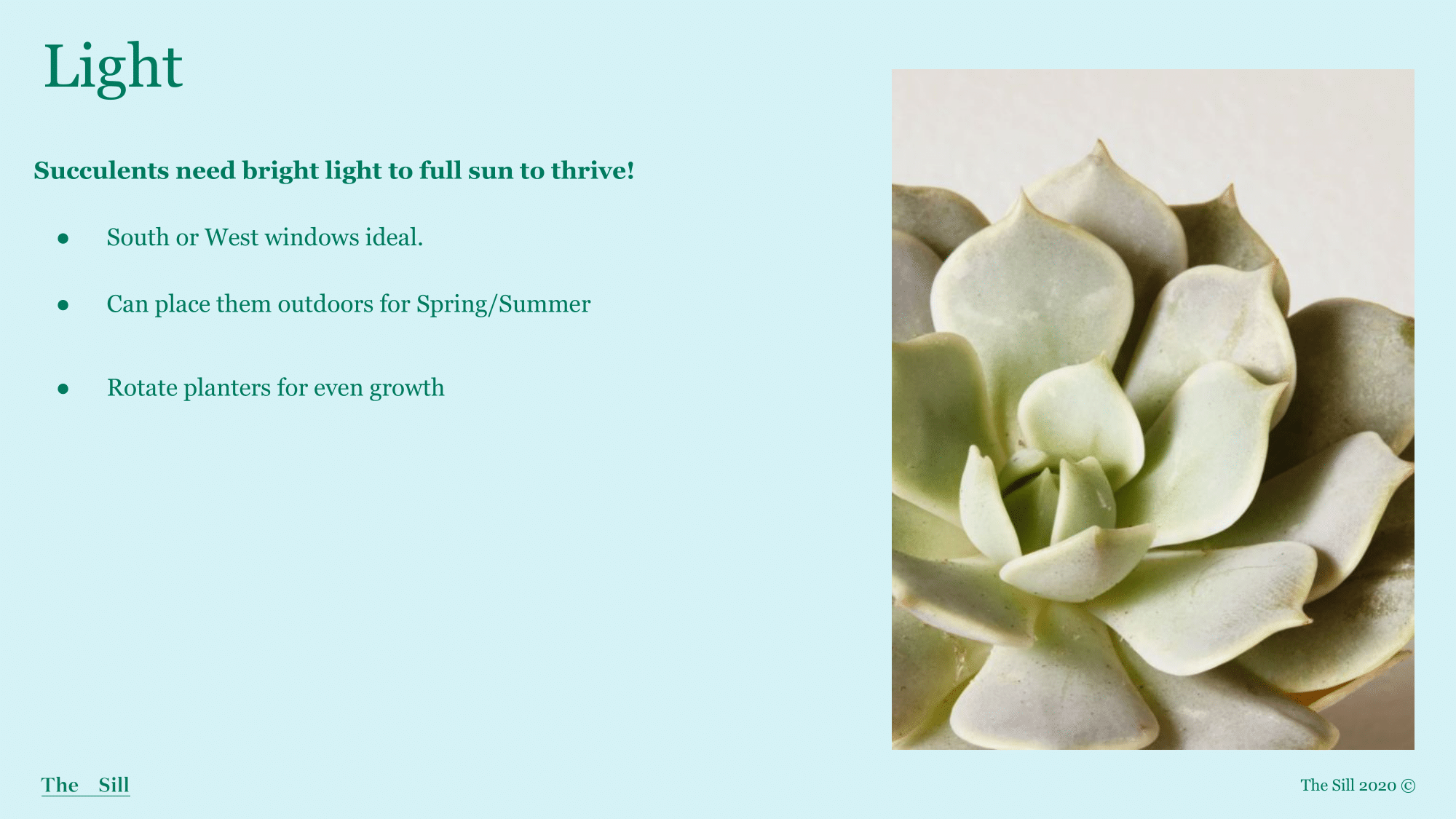
Light
It’ll be best to keep succulents directly in a window to help maximize light for them. A South window is ideally the best spot to place succulents since that is the only window that gets the most bright light to full sun indoors. A Western exposure can be another good alternative since it does provide some afternoon sun when it sets. Northern windows aren’t ideal since they only provide about a low-moderate indirect light. East window can work but etiolation (stretching, long inter-nodal space may occur.) Succulents like Haworthia, and Gasteria, however, can tolerate shade better.
Succulents can be moved outdoors for the Spring & Summer months which can help to induce flower or more pigmented foliage depending on the species. However, you still want to pre-condition (acclimate) these plants to the increased light by placing them in partial shade to start instead of placing directly in direct sunlight.
Rotating your planters as they start to stretch toward the light will help to encourage even growth.
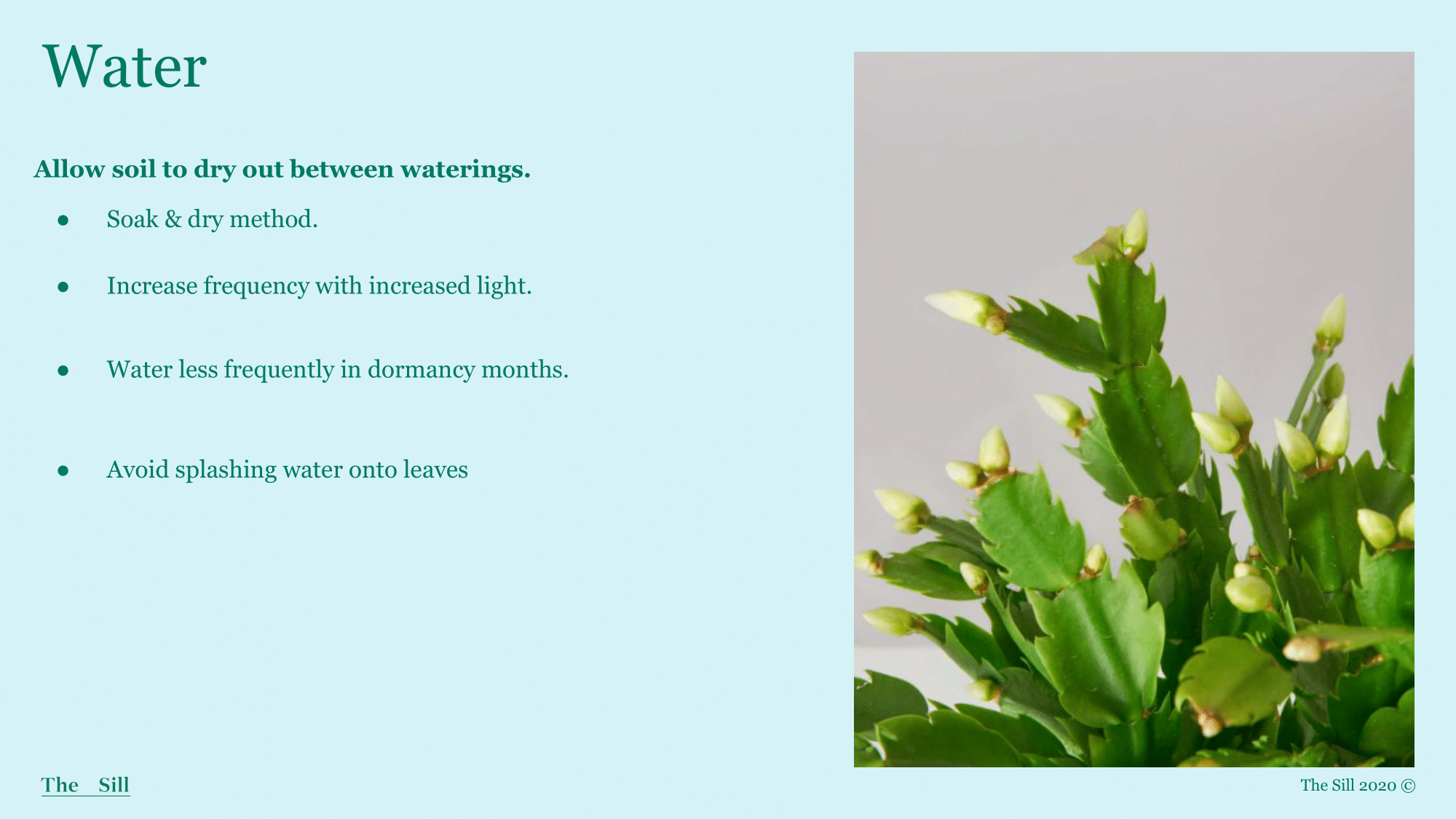
Water
Since succulents are drought tolerant it’s best to ensure you’re letting the soil get bone dry in between waterings, and then give the plants a thorough soak. It’s commonly mistaken that succulents need little water but you shouldn’t be pouring just a drop when dry but rather saturate the soil completely.
During the Summer months, succulents will start to use water more quickly than before. So despite them being drought tolerant it won’t be ideal to water only every 3-4 weeks during this time since their metabolic activity is faster which means they are drinking water faster. It’ll be safe to water your succulents as soon as the soil has dried out, whether that becomes weekly or bi-weekly. Also, succulents in smaller containers will dry out faster than those in larger ones.
Winter is the time where succulents go dormant due to the diminished daylight hours and intensity of light. It’s ideal to not water succulents as frequently as during the growing season, some people don’t even water their cacti at all during Winter and they survive!
Splashing water onto the leaves can leave room for unsightly blemishes or fungal infections to develop. To avoid this, you can bottom water, use a narrow spout watering can, or wipe the leaves off after watering if water splashed onto them.
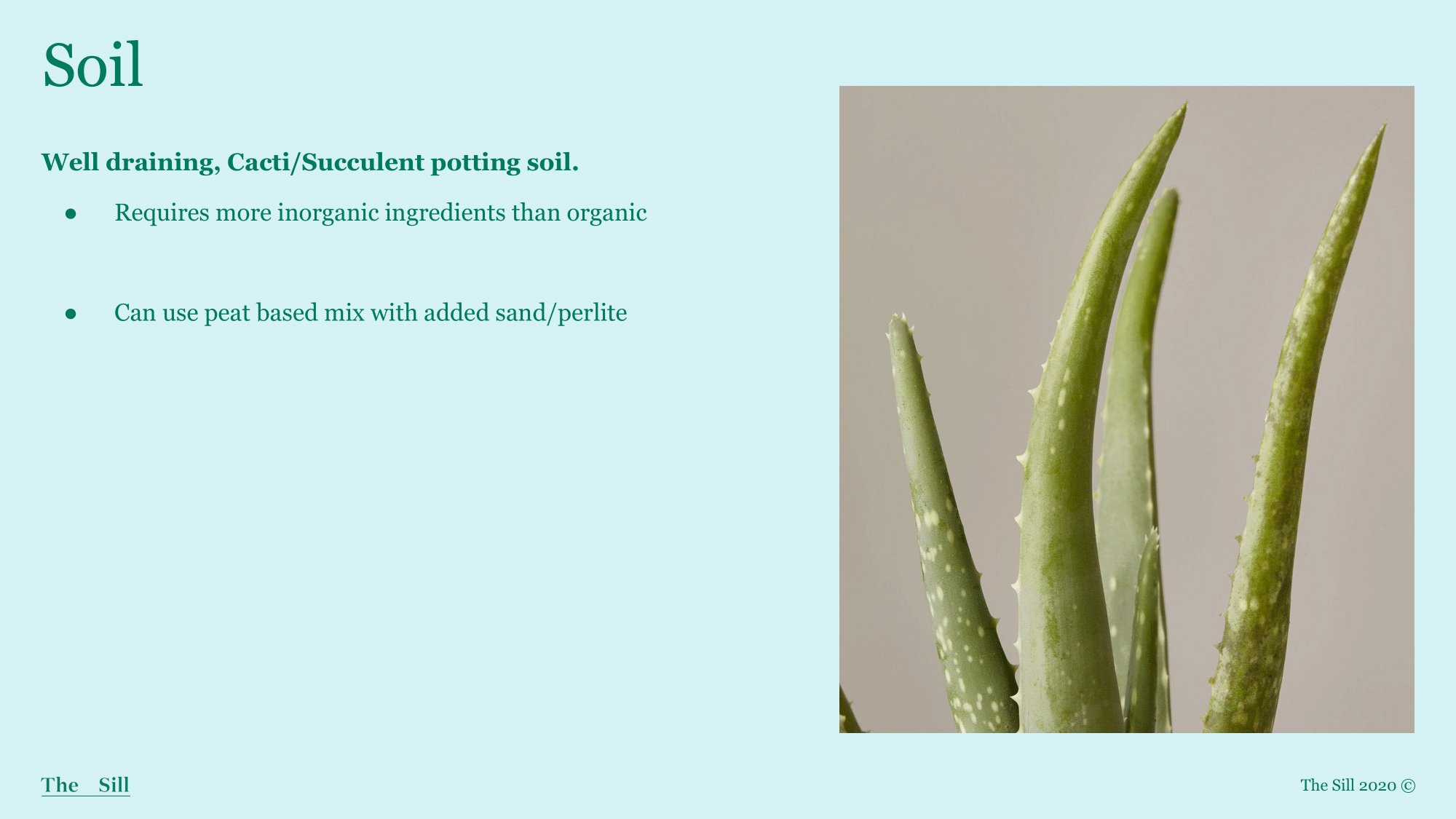
Soil
Potting soil that has more inorganic ingredients (sand, perlite, vermiculite) allow for more drainage and aeration for Succulents root which is what they need. Succulents also originate from low-nutrient environments which these potting mixes provide for them.
There are pre-made cacti/succulent mixes on the market that are used for these plants. However, you can also use a standard peat based mixture that is amended with sand or perlite to increase the level of aeration and drainage in the soil.
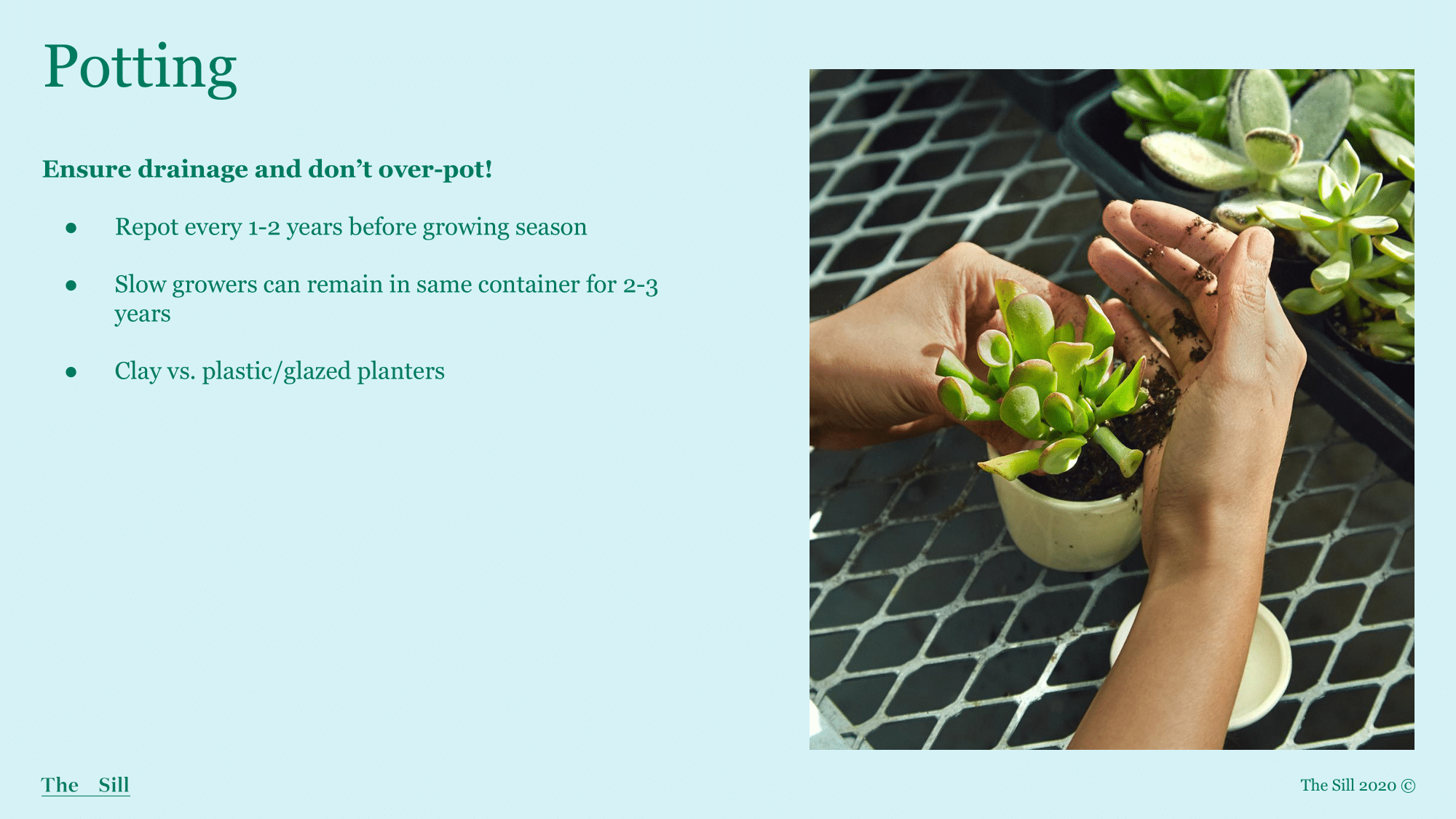
Potting
It will be ideal to plant your succulents in containers with a drainage hole to ensure excess water can spill out and doesn’t accumulate by the roots. However, it is possible to plant succulents into containers without a drainage hole as long as you’re mindful of how much watering you’re pouring in, and also providing a drainage layer at the bottom can be helpful to pool away any excess water in case too much is poured in.
Since succulents have shallow root systems and are slow growing they can generally live in the same sized container for 1-2 years before upgrading in container size or resoiling, this is also dependant on active growth. While it’s generally a good idea to provide fresh soil after 1-2 years it’s not always necessary if the succulents haven’t been actively growing.
When potting, most plant parents like to pot succulents into clay terracotta planters since they are more porous and allow for more air-flow to get to the roots. However, using glazed ceramic or plastic containers can also work well for these plants but keep in mind the soil will remain moist for longer compared to those that are planted in terracotta.
Can use folder newspaper, or specially made gloves to repot cacti and Euphorbias to protect yourself from the sharp spines.
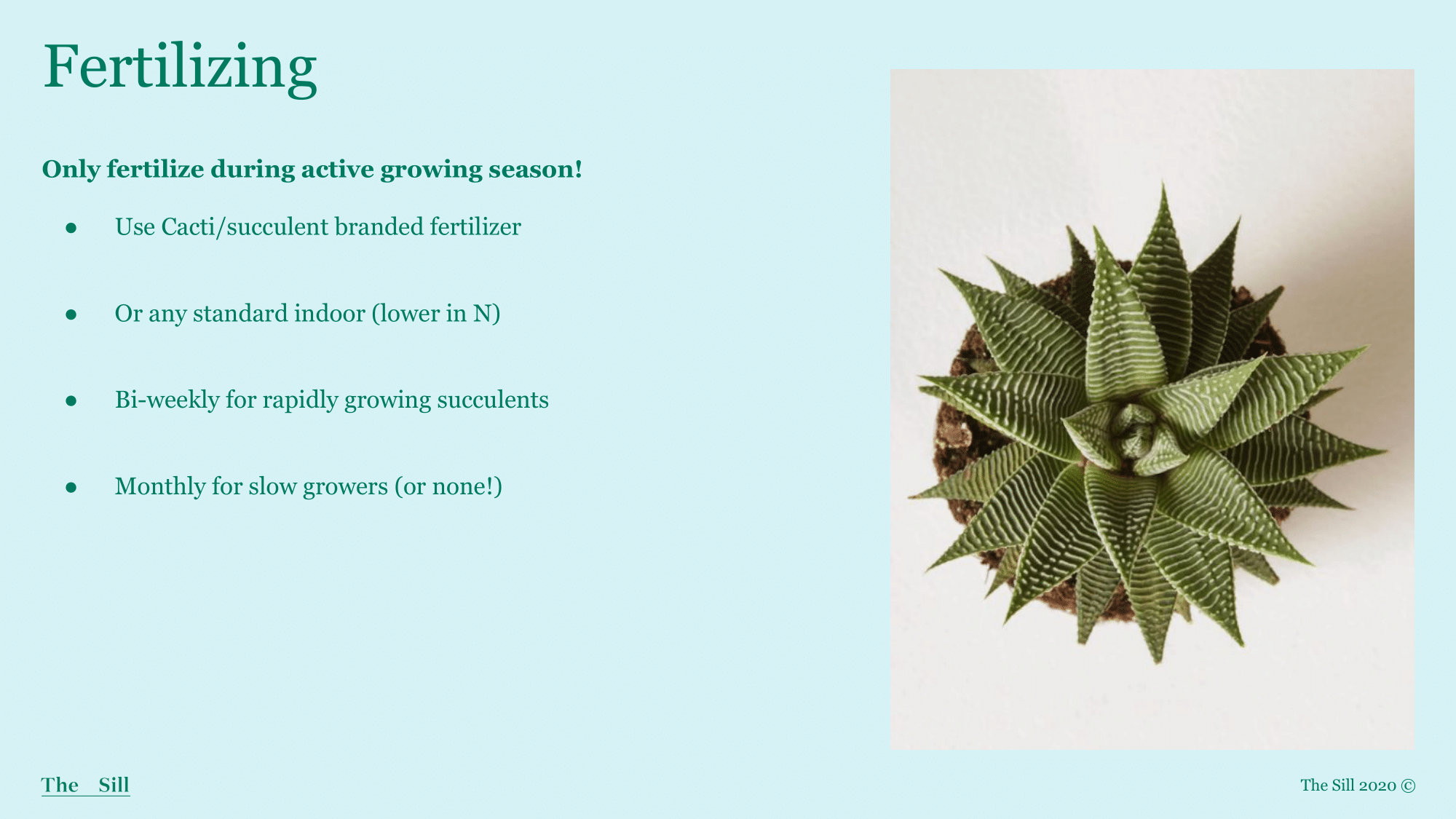
Fertilizing
You can feel free to fertilize your succulents/cacti during the active growing season (Spring/Summer) to help encourage growth. Make sure you’re only using a cacti/succulent branded fertilizer since they don’t need as much nutrients as tropical houseplants.
You can also use a standard indoor fertilizer that is lower in Nitrogen as too much nitrogen can make growth soft and weak, and it can also inhibit flowering.
You can fertilize bi-weekly for rapidly growing succulents like Echeveria, Crassula, Sedums, Schlumbergera, Kalanchoe, Aloes. Only fertilize monthly though for slow growing succulents or not at all! (Haworthia, Cacti, Gasteria, etc). Most plant parents forgo fertilizing their succulents/cacti since they don’t require as much nutrients, but the occasional fertilizer will not harm them as long as it’s applied correctly!
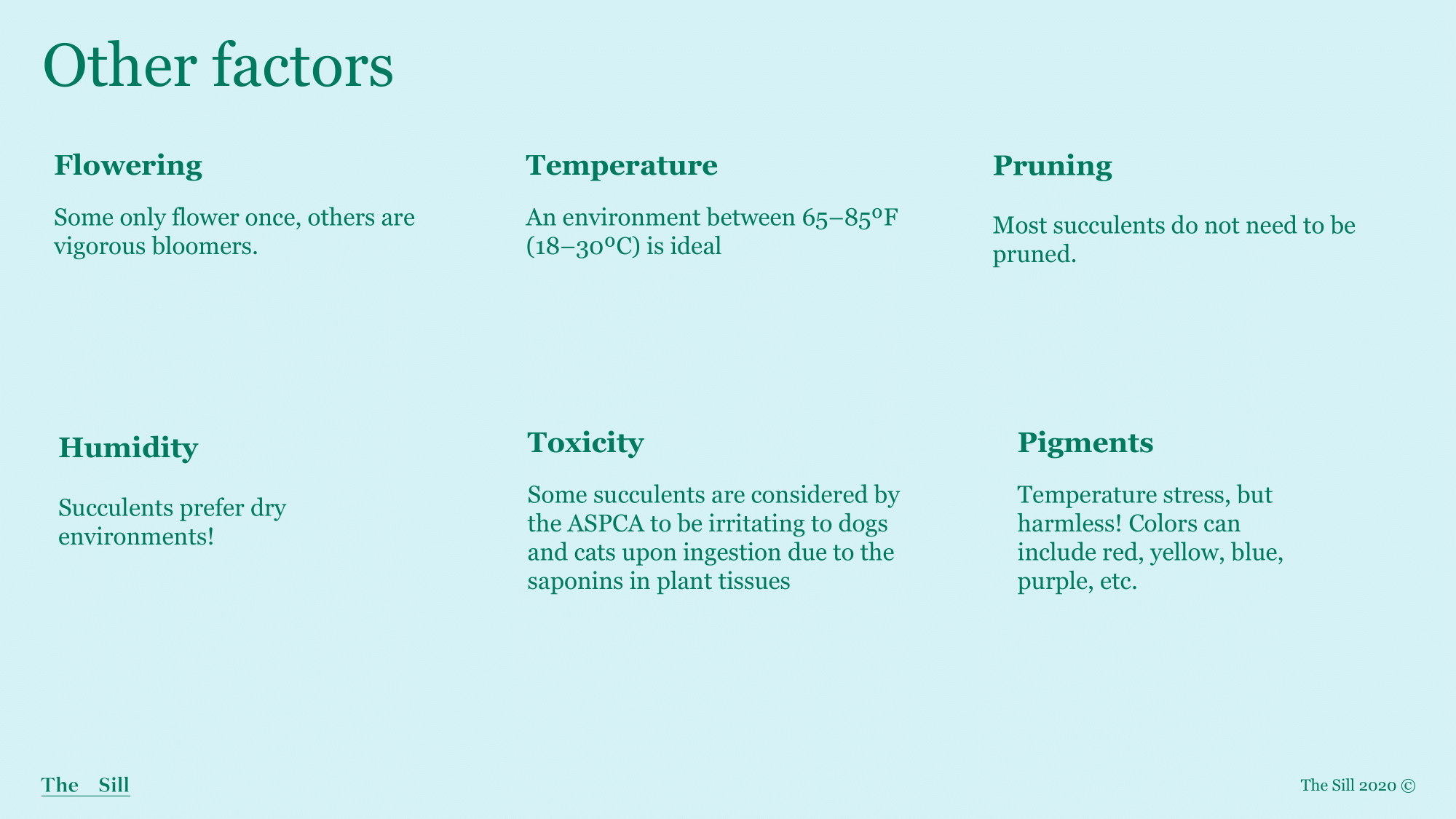
Other Factors
- Flowering - Succulents are only more likely to flower if put outside during the growing season but some may surprise you on their own!
- Pruning- Pruning can primarily be done to remove dead/lackluster foliage or leggy stems or to propagate portions of the plant.
- Humidity - Regular room humidity is best. Avoid extremes like a heater blasting dry, hot air as even succulents like a stable environment. Can use a dehumidifier for humid areas that cannot be temperature controlled.
While there are some succulents out there that are non-toxic (pet-friendly) like Echeveria, Haworthia, Sempervivum this is not the case for all. Be sure to do the research on the succulent you’re bringing home to see if it’s safe to keep around curious pets or children. ASPCA website is a good resource for this.
Some succulents will develop more pronounced pigments on their foliage as a result of temperature stress. This is completely harmless but it’s how most succulents get their color!
- 1. Succulents
- 2. Care
- 3. Propagation
